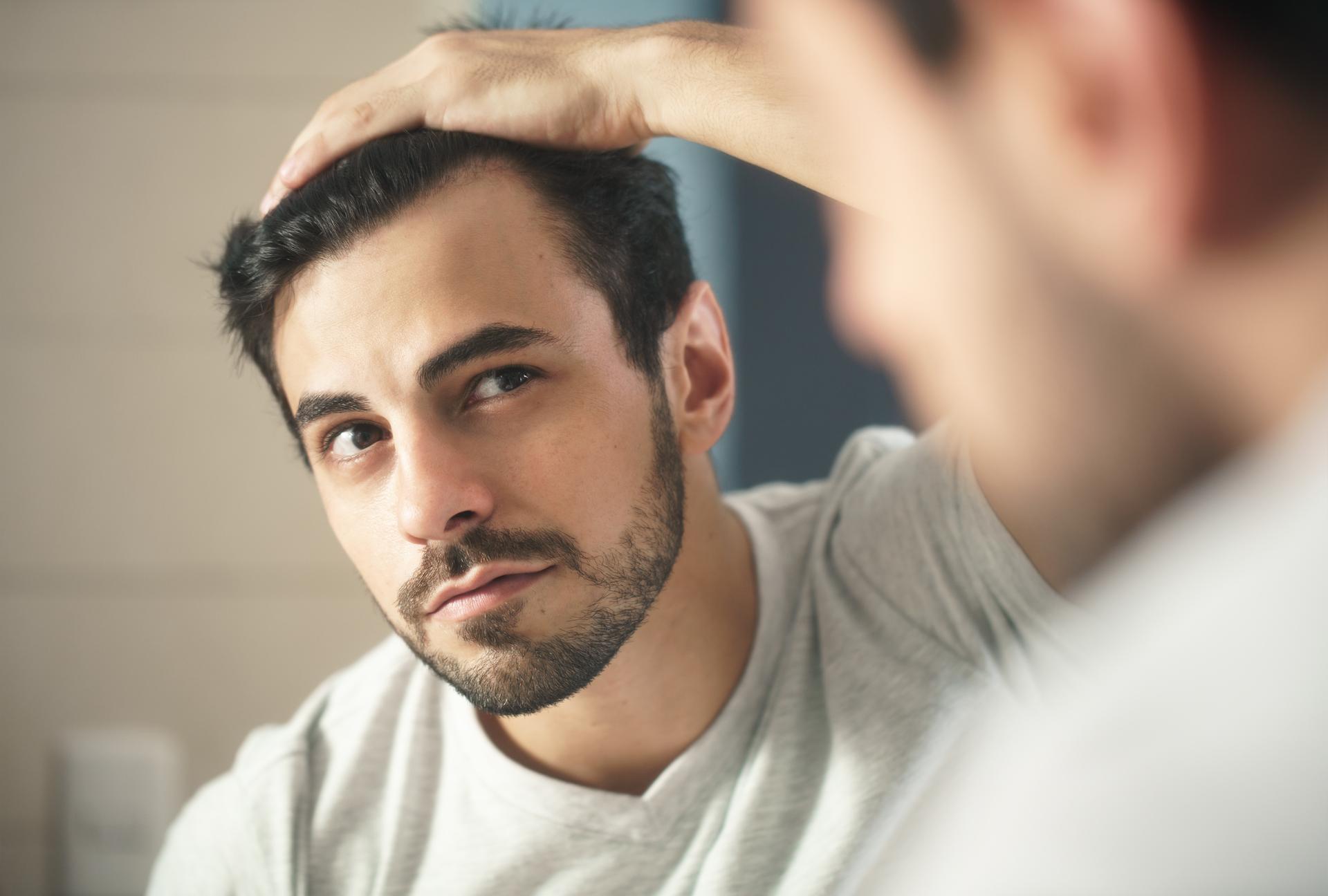Hair loss affects about 80 million Americans. An average American opting for hair loss treatments might spend as little as $65.16 on supplements to over $8,000 on PRP injections. However, non-surgical hair replacement costs can vary, with certain hair grooming products costing over $1,500, some supplements costing over $1,056, and PRP treatments being available for as low as $5,600.
With a wide range of hair loss treatments available, it’s important to understand the pros and cons of each treatment before choosing the appropriate one, and this blog will help you do so. This article discusses some popular non-surgical hair loss treatments while also explaining some surgical ones.
What Is the Best Non-surgical Hair Loss Treatment?
Reports suggest that Androgenetic alopecia, or male/female pattern baldness, is the most common type of progressive hair loss disorder. The most common non-surgical treatment options to cure androgenetic alopecia in men and women include dutasteride, finasteride, low-level laser therapy (LLLT), minoxidil, and platelet-rich plasma (PRP).
Patient results show LLLT as the most effective treatment. They also prove that PRP, finasteride, minoxidil, and dutasteride are very effective in increasing the hair count following treatment.
See Also: Essential Things to Know before Opting for a Hair Transplant
Treatment Options for Hair Loss
Here’s a list of the most popular and effective non-surgical treatments available for hair loss:
1. LLLT
Level Laser Therapy (LLLT) treatment stimulates cell growth and can effectively treat hair loss. It is a non-surgical hair restoration treatment that uses low-intensity light to stimulate the growth of epidermal stem cells in the hair follicle bulge. The treatment has been approved as a safe and efficient hair growth treatment for men and women.
2. PRP
Platelet-Rich-Plasma (PRP) therapy is deemed one of the best non-surgical hair restoration treatments available. It involves injecting platelets extracted from the patient’s blood sample into the scalp. It’s a relatively recent method of treating hair loss involving various proteins and growth factors to promote body healing and hair growth.
3. Topical Solutions
Topical hair loss products are available in liquid or foam form and are applied to the scalp. Topical hair loss products include hair growth shampoos, serums, and medications like topical anthralin (for alopecia areata), and topical tretinoin (Retin-A, often combined with minoxidil to treat female and male pattern baldness), topical minoxidil (OTC medicine to treat multiple hair loss conditions), etc. Consult your doctor before opting for any of these medications. Also, remember that the effects of these medicines are typically visible after a few months of usage.
4. Hair Growth Tablets
Hair-stimulating tablets and serums are also effective non-surgical hair restoration options. These are clinically proven, approved by the FDA, and include medications such as pills with DHT-blockers for preventing hereditary hair loss, Propecia (Finasteride), dutasteride (Avodart), etc. You can also opt for vitamin and mineral supplements to minimize hair loss caused by illness or medications. However, consult your doctor before opting for any hair growth tablet.
5. Scalp Micropigmentation
This is a hair replacement option that involves the usage of ink to create an illusion of natural hair. This treatment uses specially formulated ink to develop various shades and dots on your scalp to mimic closely shaved hair.
6. Pep Factor
Pep factor is a sophisticated treatment option for scalp rejuvenation that can help cure up to stage 5 hair loss. The hair follicles can be stimulated by having the right amount of collagen insertions in the scalp, resulting in improved hair development. The results of this treatment are fast and can be seen in as little as a few weeks.
7. Healthy Diet
Having a healthy diet is key to preventing and minimizing hair loss and enhancing hair growth. Any deficiency or excess of specific nutrients in your diet can result in hair loss. To ensure healthy and strong hair, avoid skipping breakfast, keep yourself hydrated, have enough protein, eat iron-rich foods, including vitamins and minerals in your diet, and consume adequate amounts of nutrient-dense foods like eggs, fish, and dairy products, etc.
See Also: Is Pep Factor an Alternative to PRP for Treating Hair Loss?
Difference between Hair Restoration and Hair Transplant
People often confuse hair restoration and hair transplant, or they use these terms interchangeably. However, there’s a substantial difference between the two.
The term “hair restoration” refers to all services and techniques available to restore hair or give the appearance of a fuller hair volume and hair density. The most common hair restoration treatments include:
- Hair transplant surgery
- Platelet-rich plasma (PRP) injections
- Scalp micropigmentation
- Prescription medications such as finasteride or dutasteride
- Topical medications such as minoxidil
In contrast, a hair transplant is a surgical procedure for hair regrowth. It is the only proven approach to restoring hair growth to bald regions in patients with substantial hair loss. Hair transplant surgery has become considerably more common in recent years, with a faster recovery period. Follicular unit transplant (FUT) and Follicular Unit Extraction (FUE) are the two types of hair transplant techniques now available.
Hair loss can have multiple causes, including autoimmune disease, stress, illness, etc. However, modern medicine has now developed several methods to restore your hair. If you are experiencing hair loss, despite having a healthy diet and taking good care of your scalp, get in touch with a medical professional to treat your hair loss and restore your hair.
How New Jersey Hair Restoration Center Can Help
Looking for the leading hair transplant clinic in NJ? Consult our team at the New Jersey Hair Restoration Center today! We offer the latest non-surgical hair restoration treatments available.
Our hair restoration experts can develop a customized treatment plan to rejuvenate your hair growth. You can also look through our non-surgical hair replacement before and after photos to get a better idea of what to expect after treatment.


